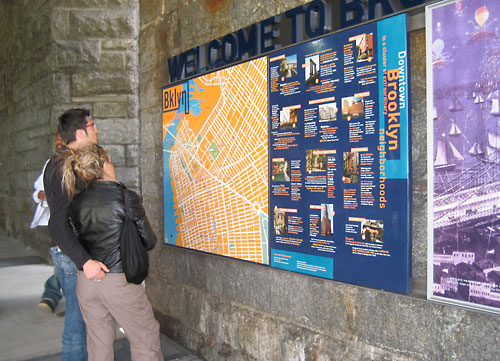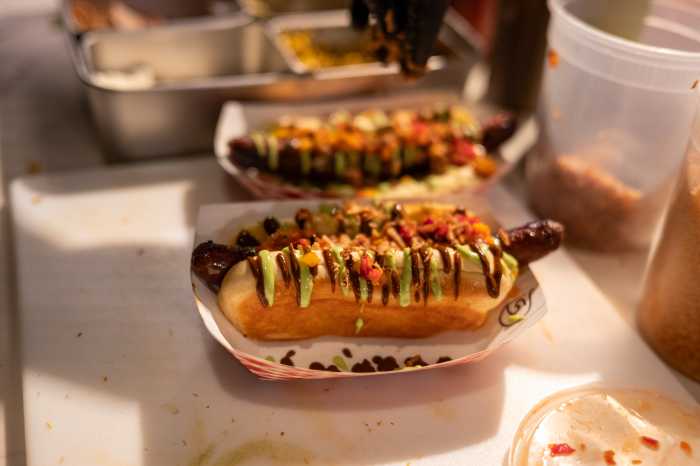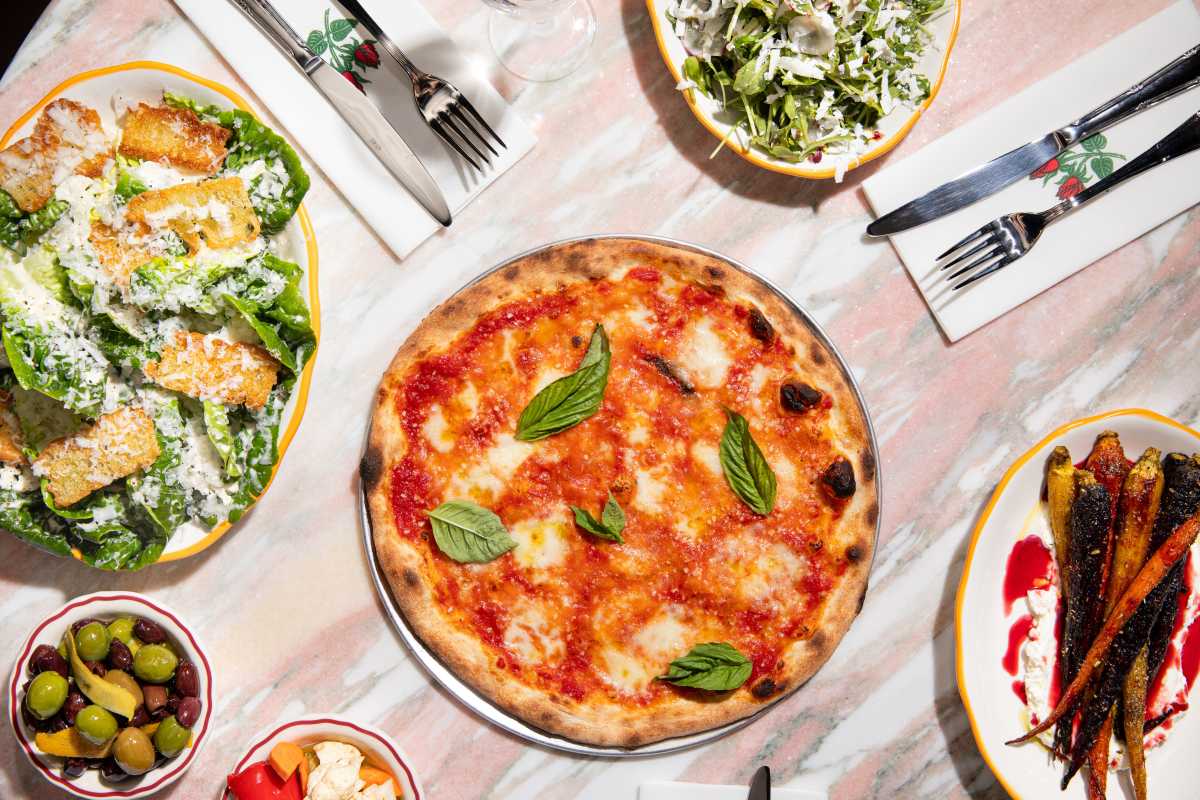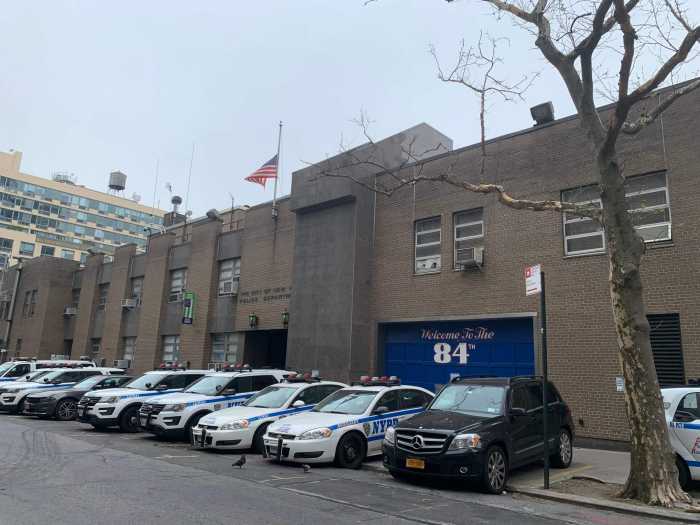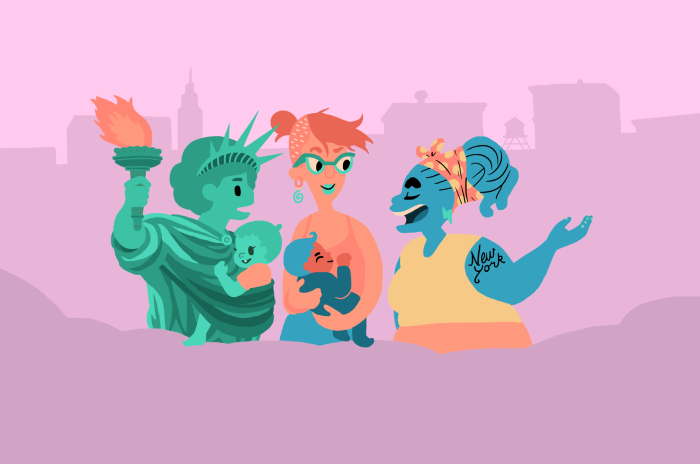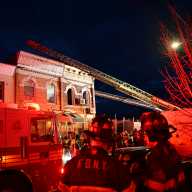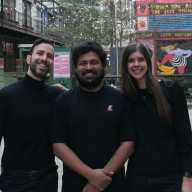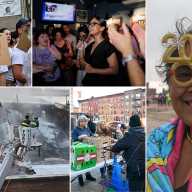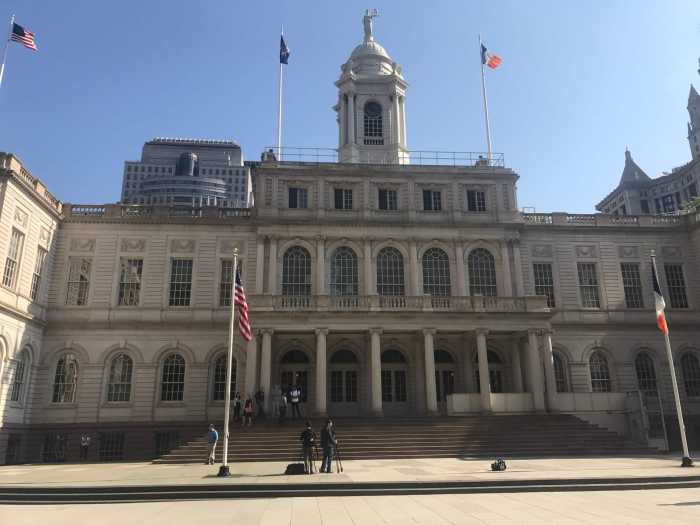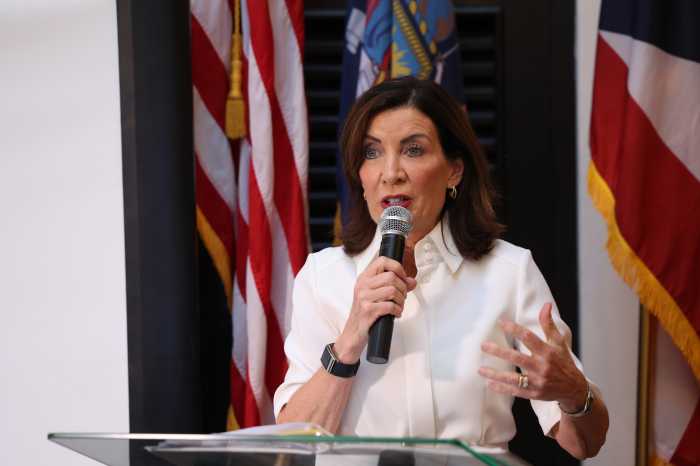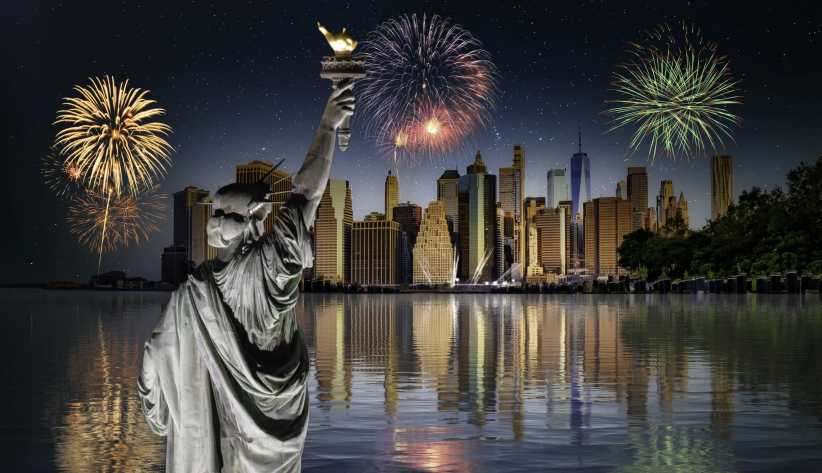Tourists will no longer be scratching their heads searching for the long-hidden Brooklyn Bridge footpath, thanks to a new map, directional signs, travel guides and stunning lighting on our side of the storied span.
The new signage — dubbed “This Way” by its designers — was unveiled on Wednesday afternoon by Borough President Markowitz, Transportation Commissioner Janette Sadik-Khan and DUMBO Improvement District Executive Director Tucker Reed, one day before the bridge’s 125th birthday celebration. Reed said the two-year, $1.5-million project had been his agency’s “number one” priority.
It’s no wonder why: Not only have tourists long been stymied by the dark underpass where the previously unmarked stairway to the bridge’s walkway begins, but DUMBO residents have often been called upon to re-direct the out-of-towners.
The benefits of “This Way” — which includes a detailed map of DUMBO and Brooklyn Heights, plus a tourist guide — were immediately apparent to those who might otherwise have become lost in the unfamiliar maze of neighborhoods and attractions so close, yet so far away, to the end of the bridge’s footpath.
“The [signs] look good and they’re eye-catching,” said Chris Yovanovich, who was in from Columbus, Ohio, for the day with her husband and daughter. “I like the pictures and the history.”
Sadik-Khan and others said the signs were vital because too many tourists would turn back towards Manhattan upon reaching the Brooklyn side because they didn’t know where they were.
“A single sign can make all the difference in the world [toward] connecting the historic Brooklyn Bridge to the equally historic neighborhoods around it,” said Sadik-Khan, who actually biked to the press conference.
But days before, tourists were still wandering through the confusing area underneath the dark Brooklyn–Queens Expressway overpass on Washington Street, the only assistance coming from a useless graffiti- and sticker-covered map several yards away (left).
“We came over just to walk back over the bridge and we couldn’t find [the way back],” Dutch tourist Dini Moorlander said after she was unable to master the area.
Few tourists ever were. The other day found Barry Freeney, a tourist from English-speaking Northern Ireland, frustrated and unable to find his way around the area.
“Back home, we have special signs for tourists,” he said.
Though local officials congratulated themselves and the city for the new signage, the problem has been acute for years, if not decades.
The situation got so dire a few years ago that a Brooklyn Heights woman, Roslyn Beck, posted her own handmade signs to direct the tens of thousands of tourists who walk the bridge every year.
DUMBO developer David Walentas, known for turning the once-industrial area into a thriving residential and office community as well as a destination for tourists, said the outcome of the way-finding initiative “couldn’t be better.”
“It’s something that needed to be done,” he said.
Walentas’s son Jed, heir to the real-estate magnate’s empire, noted the immediate benefits of the signs, one being that Brooklynites will no longer have to serve as tour guides for the influx of visitors that come to the historic location.
“You can’t stand here for more than four minutes without being stopped,” Walentas said of people seeking directions. He said the large map on the wall of the underpass was much needed, adding, “We see people using it as we speak.”
Markowitz and Councilman David Yassky (D–Brooklyn Heights) allocated the funding out of their discretionary budgets, Reed said.
The multi-faceted design consists of Andrew Simons’s huge map and tourist guide, plus “Welcome”-mat style concrete slabs positioned at the opening of the stairwell that leads up to the Brooklyn Bridge.
But the most impressive part of the project is light artist Linnaea Tillett’s piece, “This Way,” whose network of fluorescent bulbs steer misguided travelers to their destination.
“There was such a need to turn this dark, uninspiring space where people were confused into something vivid,” said Tillet, who worked with architect Karin Tehve. “The lighting and signage works together to show people their way.”
Visitors were not the only people complaining about the horrific welcome they received on our side of the bridge.
Last year, The Brooklyn Paper described the defaced map and others like it as “totems hearkening back to the bad old days when tourists shunned New York entirely.”
But tourists are flocking to this side of the Brooklyn Bridge — and, until now, had to rely on the kindness of strangers.
“Do you know how many people ask me for directions when I walk to work?” said Rachel Brown, whose office is in nearby DUMBO.
More than that, Brown said she was frustrated because Brooklyn was losing a chance to capitalize on the tourist influx.
“Tourists get intimidated and go back to Manhattan,” she said.


